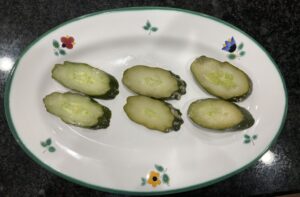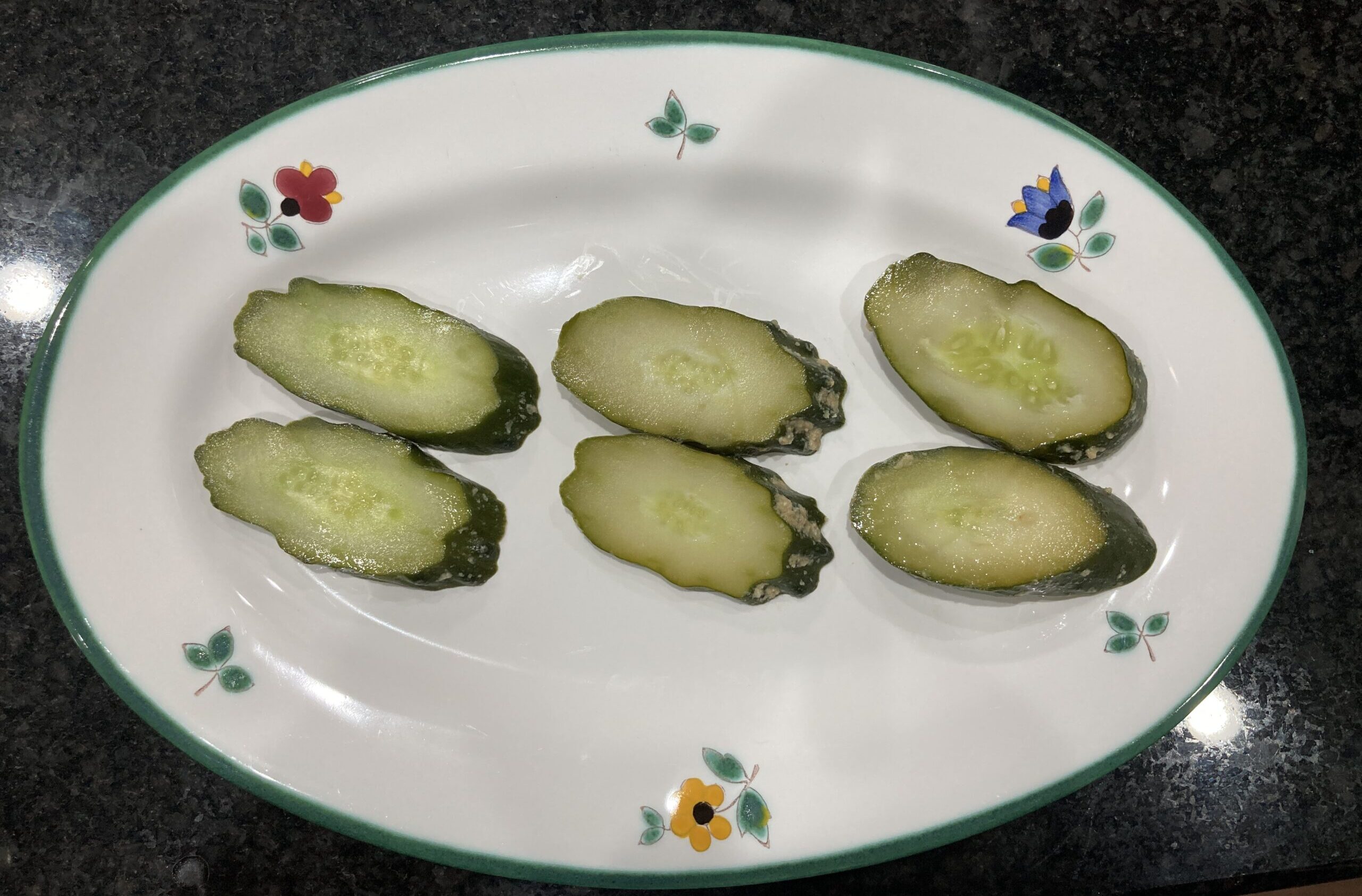As someone who’s become quite attached to the daily rhythm of maintaining a nukadoko (fermented rice bran bed), I recently decided to run a small experiment — something I’ve always been curious about: how does the pickling time affect the flavor and texture of nukazuke cucumbers?
I bought three fresh Japanese cucumbers and immersed them in my well-maintained nukadoko at the same time. Then, I pulled them out at three different intervals: 12 hours, 18 hours, and 24 hours.
Here’s what I discovered.
The Setup
For this experiment, I used:
- 3 nearly identical cucumbers (washed, tips cut off)
- My established room-temperature nukadoko
- A clean fermentation container with enough space to lay them side-by-side
All three cucumbers were buried at the same time and in the same conditions — the only variable was time. Please note salinity of your nukadoko will affect your results.
Results first

From left to right, 12h, 18h and 24h.
Colors are slightly different. I don’t usually wash away all the nuka on my veggies. They are safe to eat and very nutritious, but don’t take too much, they contain considerable amount of salt.
12 Hours: Light and Refreshing
The first cucumber I removed after 12 hours had only a slight yellowish tint and retained most of its original crunch. The taste was very subtle — a light saltiness with just a hint of fermentation. If you’re someone who enjoys crisp, fresh pickles with just a touch of umami, this stage is perfect.
18 Hours: Deeper Flavor, Softer Bite
The second cucumber, pulled out at 18 hours, had developed a more noticeable color and aroma. The skin had softened slightly, and the flavor was distinctly more fermented — not sour, but a balanced, mellow umami that lingered pleasantly on the tongue.
This stage felt like the “sweet spot” — flavorful, but not overpowering.
24 Hours: Full Fermentation, Bold Taste
The final cucumber, removed at 24 hours, had clearly taken in the full power of the nukadoko. It was significantly darker and softer, and the aroma was much stronger. The taste? Salty, tangy, deeply umami-rich — possibly too intense for beginners, but satisfying for experienced nukazuke fans.
This one would be excellent sliced thin and served with hot rice or in ochazuke.
📝 What I Learned
This little experiment reminded me how nuanced and customizable nukazuke can be. With just a few hours’ difference, the experience of eating the same vegetable transforms dramatically.
Here’s a quick summary:
| Pickling Time | Texture | Flavor Profile | Best For |
|---|---|---|---|
| 12 hours | Crisp, fresh | Light salt, mild aroma | Pickle beginners, snacks |
| 18 hours | Slightly soft | Balanced, mellow umami | Side dish, rice accompaniments |
| 24 hours | Soft, rich | Deeply fermented, tangy | Ochazuke, fermented food fans |
Final Reflections: Find Your Preference
One of the joys of making nukazuke at home is experimentation. This process taught me that there’s no single “right” pickling time — just personal preference. Some days I crave a light, crisp taste; other times, I want something deeply funky and full-bodied.
I encourage anyone who keeps a nukadoko to try this simple experiment for themselves. You’ll not only learn more about your own taste, but also gain a deeper appreciation for the art of fermentation.
Let your nukadoko surprise you — one cucumber at a time.


